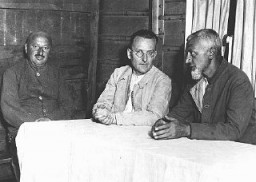You searched for: 微盘项目开发搭建【TG���������@EK7676】平台包网搭建微盘项目开发搭建【TG���������@EK7676】平台包网搭建4tAQh4T346
<< Previous | Displaying results 31-40 of 271 for "微盘项目开发搭建【TG���������@EK7676】平台包网搭建微盘项目开发搭建【TG���������@EK7676】平台包网搭建4tAQh4T346" | Next >>
-
Fort Ontario refugee shelter
PhotoAmerican military police admit a father and daughter, both displaced persons, to the refugee shelter at Fort Ontario. Oswego, New York, United States, after August 4, 1944.
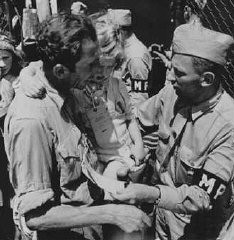
-
A survivor in Wöbbelin
PhotoA survivor in Wöbbelin. The soldier in the foreground of the photograph wears the insignia of the 8th Infantry Division. Along with the 82nd Airborne Division, on May 2, 1945, the 8th Infantry Division encountered the Wöbbelin camp. Germany, May 4-5, 1945.
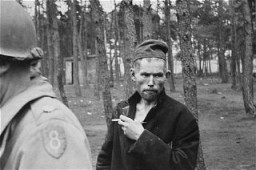
-
View of the Wöbbelin concentration camp
PhotoOn May 2, 1945, the 8th Infantry Division and the 82nd Airborne Division encountered the Wöbbelin concentration camp. Here, American soldiers patrol the perimeter of the camp. Germany, May 4-May 10, 1945.
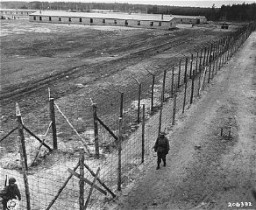
-
US troops at the Wöbbelin camp
PhotoOn May 2, 1945, the 8th Infantry Division and the 82nd Airborne Division encountered the Wöbbelin concentration camp. This photograph shows US troops in the Wöbbelin camp. Germany, May 4–6, 1945.
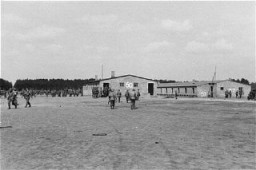
-
A chaplain with the 82nd Airborne Division helps a survivor
PhotoA chaplain with the 82nd Airborne Division helps a survivor board a truck that will evacuate him from the Wöbbelin concentration camp to an American field hospital. Germany, May 4, 1945.
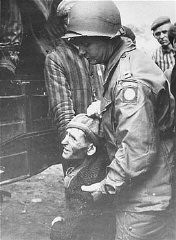
-
Bodies of prisoners discovered in Wöbbelin
PhotoA US Army soldier views the bodies of prisoners piled on top of one another in the doorway of a barracks in Wöbbelin. Germany, May 4–5, 1945.
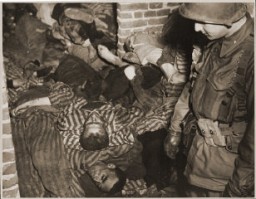
-
Father Charles Coughlin
PhotoFather Charles Coughlin, leader of the antisemitic Christian Front, delivers a radio broadcast. United States, February 4, 1940.
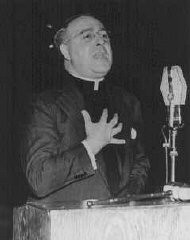
-
Caring for survivors of Wöbbelin
PhotoSurvivors of the Wöbbelin camp wait for evacuation to an American field hospital where they will receive medical attention. Germany, May 4-6, 1945.
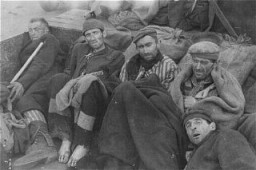
-
Abba Kovner testifies during the Eichmann trial
PhotoJewish partisan and poet Abba Kovner, a survivor of the Vilna ghetto, testifies during Adolf Eichmann's trial. Jerusalem, Israel, May 4, 1961.
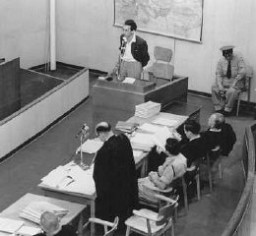
-
Social Democratic political prisoners in the Duerrgoy camp
PhotoSocial Democratic political prisoners in the Duerrgoy concentration camp near Breslau. Seated in the center is Paul Loebe, a leading Socialist and former president of the German parliament. Duerrgoy camp, Germany, August 4, 1933.
